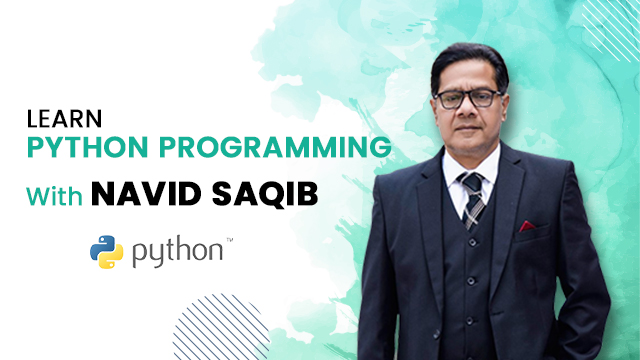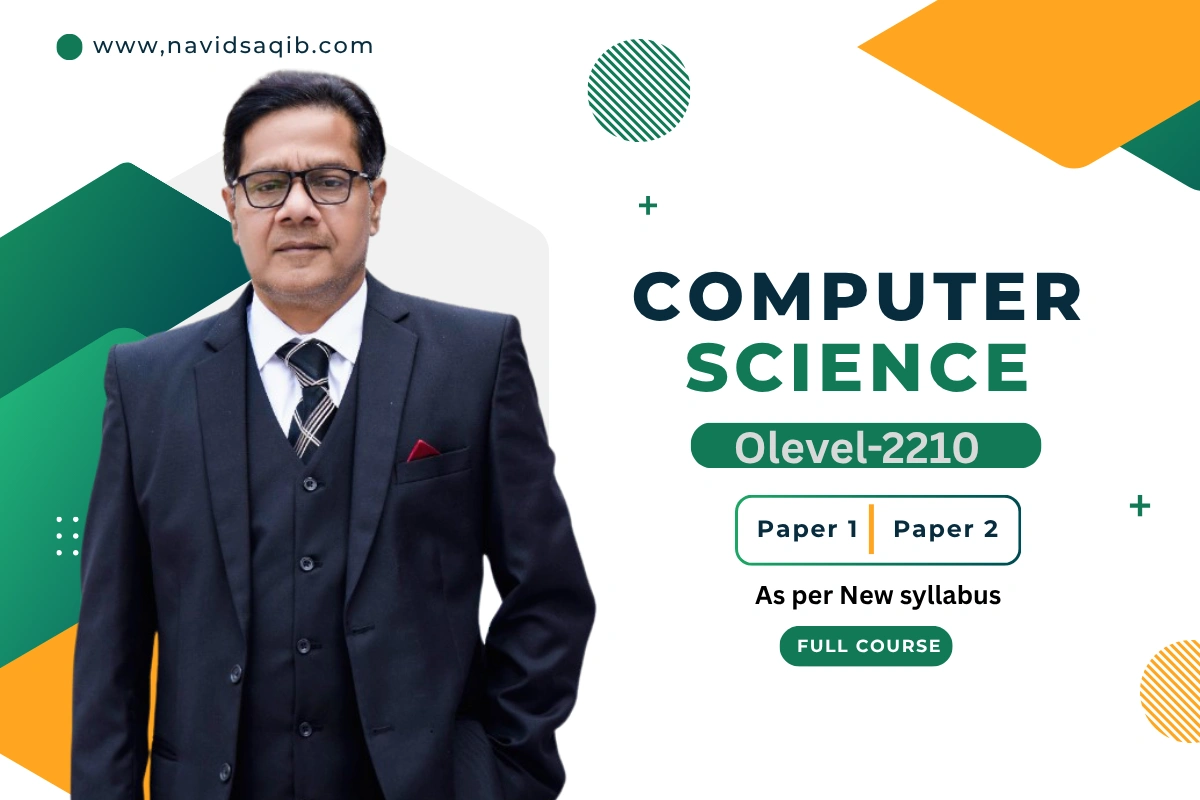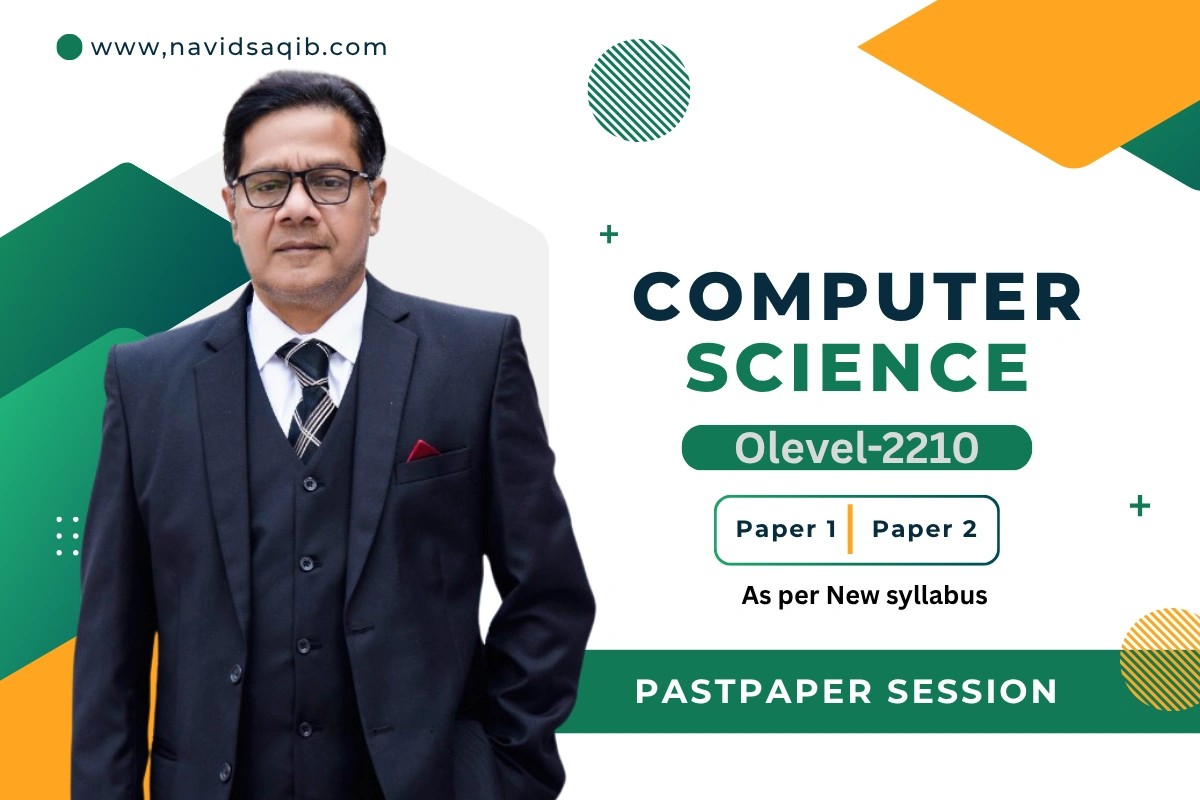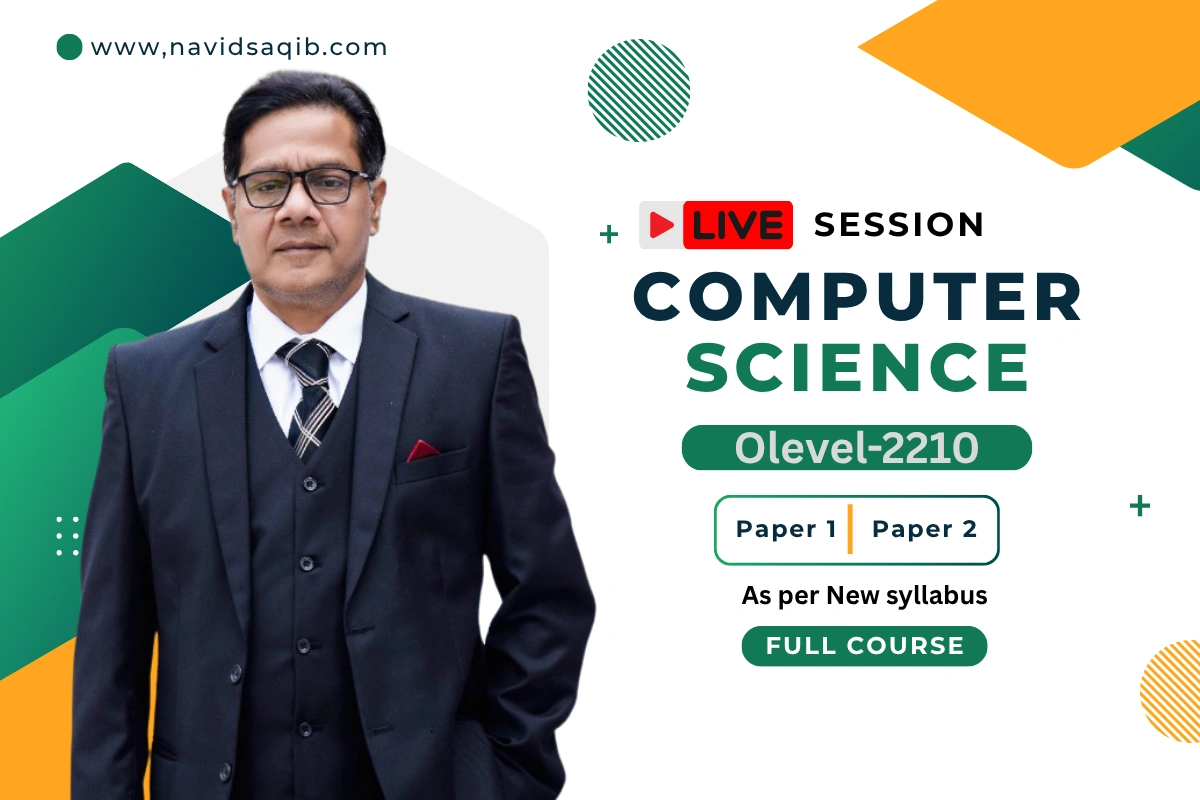O-Level Computer Science 2210 Complete Notes & Practice Pack
Master your O-Level Computer Science 2210 syllabus with this comprehensive Notes Pack! Designed to cover all topics of the syllabus, it includes:
-
Extensive Coverage: Every concept is explained clearly and systematically, ensuring you understand the core topics.
-
Over 80 Practice Sheets: Ample exercises and worksheets for rigorous practice to boost your exam readiness.
-
Interactive Content: Engaging activities and quizzes to reinforce learning.
-
Video-Based Notes: Concept-focused videos that simplify complex topics and help you visualize key ideas.
Whether you want to strengthen your understanding of theory or practice problem-solving, this Notes Pack is the ultimate resource for excelling in your O-Level Computer Science exams.
What Will You Learn?
- The notes pack is available for a limited time. During your O-Level studies, you can access it at any time on your PC, tablet, or mobile device at your convenience.
Material Includes
- Extensive Coverage: Every concept is explained clearly and systematically, ensuring you understand the core topics.
- Over 80 Practice Sheets: Ample exercises and worksheets for rigorous practice to boost your exam readiness.
- Interactive Content: Engaging activities and quizzes to reinforce learning.
- Video-Based Notes: Concept-focused videos that simplify complex topics and help you visualize key ideas.
Requirements
- It is recommended that you complete all practice material in your notebook for a better and more solid understanding.
Audience
- Olevel Appearing student
- Repeating Students
Course Content
How to Use These Notes Effectively ?
-
01:36
Computer Science : Paper 2
-
-
The Computer System and its Sub systems
-
Decomposing A Problem
-
Methods used to design and construct a solution to a problem
-
Knowing Pseudo-codes
-
Flowchart
-
Explaining the purpose of an algorithm
-
Writing and amending algorithms
-
How to develop a pseudo-code or program code ?
-
Variables and Constants
-
What Are Data Types?
-
Input and Output
-
Sequence
-
Selection
-
Nesting of IF statements
-
ITERATION
-
Verification
-
Validation through While loop
-
Test Data
-
Trace tables to document dry runs of Algorithms
-
Identifying Errors in Algorithms
-
1D Array
-
What is Maximum, Minimum, and Average?
-
Linear search in 1D Array
-
Bubble Sort
-
2D Array
-
What are Library Routines?
-
Procedures and Functions (Modular Programming)
-
Purpose of storing data in a file
-
Files Handling
-
Using Files in Programming
-
String Handling
-
Creating a maintainable program
-
Knowing Database
-
Boolean Logic
Solved Paper 2 May/June 2025 – 22
-
Paper 2 May’June 2025 – 22
01:45
Computer Science : Paper 1
-
-
-
Chap1: Knowing Number Systems : Hexa Decimal
-
Chap1: Knowing Number Systems : Binary Addition
-
Chap1: Knowing Number Systems : Binary logical Shift
-
Chap1: Knowing Number Systems : Two’s complement (binary numbers)
-
Chap1: Text – Character sets – ASCII code and Unicode
-
Chap1: Representing of Sound
-
Chap1 : Representation of (bitmap) images
-
Chap1 : Measurement of data storage
-
Chap1: Calculation of file size
-
Chap1: Data compression
-
Chap1: Lossy and lossless file compression
-
Practice Session 1 : Chap 1
-
Practice Session 2 : Chap 1
-
Practice Session 3 : Chap 1
-
Review of Chapter 1
04:14 -
Chapter 2 : Data Transmission
-
Chap2 : Data packets
-
Chap2 : Data transmission
-
Chap2 : Universal serial bus (USB)
-
Chap2 : The need to check for errors
-
Chap2 : Automatic Repeat Requests (ARQs)
-
Chap2 : Purpose of Encryption
-
Chap2 : Symmetric and asymmetric encryption
-
Practice Session 1 : Chap 2
-
Practice Session 2 : Chap 2
-
Practice Session 3 : Chap 2
-
Chapter 3 : Hardware
-
Chap3 : The central processing unit (CPU)
-
Chap3 : Von Neumann architecture
-
Chap3 : Components of the central processing unit (CPU)
-
Chap3 : System buses and memory
-
Chap3 : Fetch–Decode–Execute cycle
-
Chap3 : Cores, cache and internal clock
-
Chap3 : Instruction set
-
Chap3 : Embedded systems
-
Chap3 : Input Devices
-
Chap3 : Output Devices
-
Chap3 : Sensors
-
Chap3 : Monitoring and Control Application in Sensors
-
Chap3 : Data Storage
-
Chap3 : Primary Memory
-
Chap3 : Secondary and Off-line Storage
-
Chap3 : Virtual Memory
-
Chap3 : Cloud Storage
-
Chap3 : Network interface card (NIC)
-
Chap3 : Media Access Control (MAC)
-
Chap3 : Internet protocol (IP) address
-
Chap3 : Routers
-
Practice Session 1 : Chap 3
-
Practice Session 2 : Chap 3
-
Practice Session 3 : Chap 3
-
Chapter 4: Software
-
chap 4: System software and Application software
-
chap 4: Utility software (utilities)
-
chap 4: Operating systems
-
chap 4: Running of applications
-
chap 4: Interrupts
-
chap 4: High-level languages and Low-level languages
-
chap 4: Assembly Language
-
chap 4: Translators
-
chap 4: Compilers and Interpreters
-
chap 4: Integrated Development Environment (IDE)
-
Practice Session 1 : Chap 4
-
Practice Session 2 : Chap 4
-
Practice Session 3 : Chap 4
-
Chapter 5 : The Internet and its Uses
-
chap 5: The differences between the internet and the World Wide Web (WWW)
-
chap 5: Uniform resource locators (URLs)
-
chap 5: HTTP and HTTPS
-
chap 5: Web Browsers
-
chap 5: Retrieval and location of web pages
-
chap 5: Cookies
-
chap 5: Digital currency
-
chap 5: Blockchaining
-
chap 5: Cyber security threats
-
chap 5: Keeping Data Safe from Security Threats
-
Practice Session 1 : Chap 5
-
Practice Session 2 : Chap 5
-
Practice Session 3 : Chap 5
-
Chap 6 : Automated and emergimg technologies
-
chap 6: Sensors, Microprocessors, and Actuators
-
chap 6: Robotics
-
chap 6: Characteristics of a Robot
-
chap 6: The role of robots and their advantages and disadvantages
-
chap 6: What is Artificial Intelligence (AI)
-
chap 6: Characteristics of AI
-
chap 6: AI systems
-
Practice Session 1 : Chap 6
-
Practice Session 2 : Chap 6
-
Practice Session 3 : Chap 6
Solved Paper 1 May/June 2005
-
Paper 1 May/June – 2005 – 12
Tags
A course by

Student Ratings & Reviews













